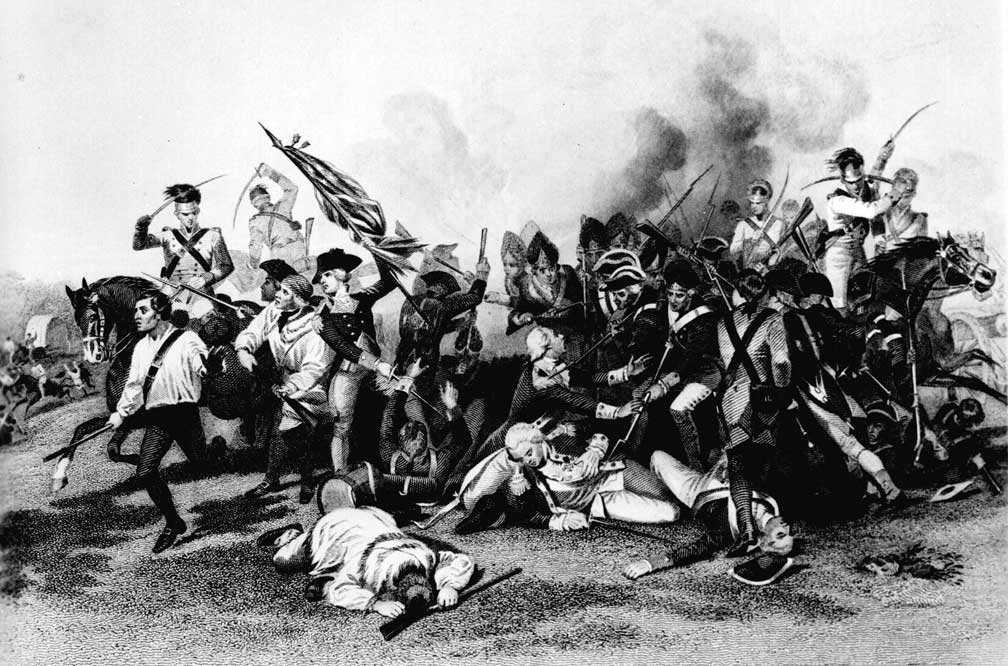Battle of Camden 1780

In July 1780, Horatio Gates was at Camden, commanding a force of 1,400 Continentals. He was soon joined by patriot troops from Virginia and North Carolina. General Cornwalis was also in Camden, with an army of 3,000. Gates and Corwalis soon found themselves facing each other across a field. The two sides advanced on each other, with the British regulars opposite the Carolina militia men. After a few minutes, the Carolina line gave way. This led to a general crumbling of the American lines, and the American army was soon in complete retreat.
.
After the defeat in Charleston, the Congress appointed General Gates to be the new commander of the American Southern District. Gates was impatient to strike back at the British. He believed the British troops at Camden, North Carolina were vulnerable. Camden was also an advanced munitions depot, so it made a tempting target.
On July 27th 1780, Gates set off for Camden with over 3,000 regular and militia troops. Gates headed directly towards Camden, despite the difficulty in obtaining supplies on the route. Gates arrived near Camden on August 14th, with his 3,000 men, believing that this would give him overwhelming numerical superiority over the forces of British Colonel Radwon, whom he believed were in Camden. Little did he know that British General Cornwallis had learned of Gates' advance and hurried to Camden with reinforcements.
Gates' forces still outnumbered the British forces. However, the British forces were better equipped and included cavalry as well as more extensive artillery. On the night of the 15th, Gates learned of the arrival of the British forces, when his forces approached Camden at night; only to run into a British force. Neither force wanted to fight at night, so they both retreated. The Americans took some soldiers prisoner and learned of the existence of Cornwallis' troops. Gates realized he faced a difficult predicament. Capturing Camden seemed nearly impossible, while a withdrawal with a large number of British cavalry forces present would be nearly impossible. He decided to stand and fight.
Gates arranged his forces in a defensive position, a strategy that had served him well at the Battle of Saratoga. Despite his knowledge of the British position, Gates arranged his forces in a disastrous deployment. He placed the militia opposite the British dragoons and Hessian soldiers, while placing his better trained Continentals opposite the Loyalist militia that Cornwallis lead. Gates' final error of the day was to order the militia forward to attack.
The American line broke at the site of the British regulars advancing. Most militia ran without firing a shot. Gates tried to staunch the retreat, but it was hopeless. The Americans began a full retreat from the battlefield, losing over 600 soldiers in the process. The Battle of Camden was a complete American defeat. It marked a low in the war for the Americans.
 >
>